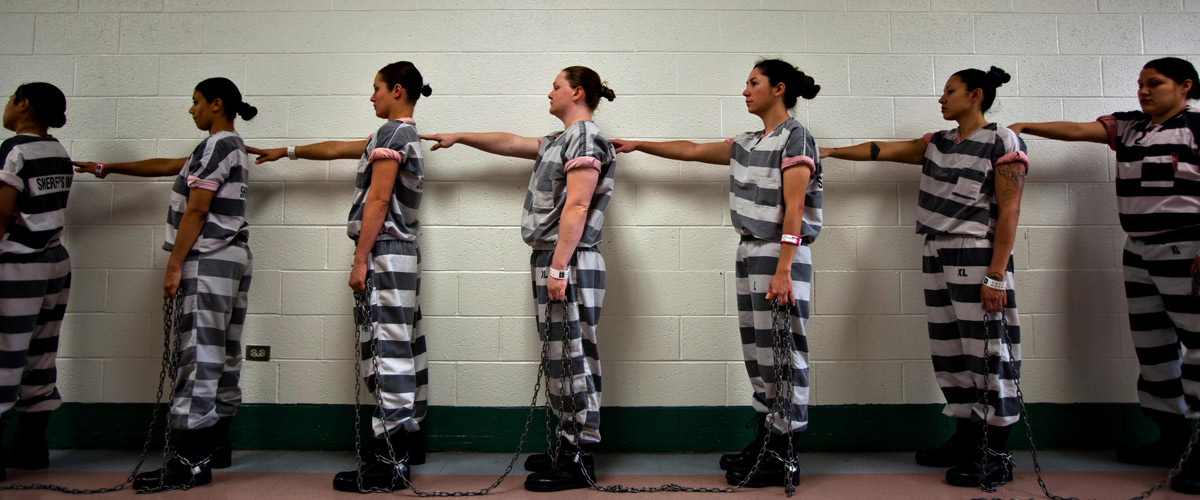Interagency Collaboration Jail Populations Women in Jail October 20, 2016
More and more, local jails are recognized as incarceration’s front door—the entry point for people who move through the criminal justice system. Intended primarily to house people awaiting trial or other case resolution who pose a danger to the community or risk of flight, jails have become warehouses for those too poor to afford bail or too sick to be managed in the community.
This is especially true of a population that has been largely forgotten in conversations about reform: women.
At this critical moment in jail and local justice system reform, a report, Overlooked: Women and Jails in an Era of Reform, released in August by the Vera Institute of Justice and the MacArthur Foundation’s Safety and Justice Challenge, focuses on women in jail—with the aim of reframing the conversation about jail reform to include them.
Nearly two-thirds of the women in jail are women of color—44% are black, 15% are Hispanic, and five percent are of other racial/ethnic backgrounds. And because nearly 8 in 10 women in jail are mothers—most of them single mothers—their incarceration has far-reaching impacts on families and communities.
Recent national attention given to the overuse of jails has galvanized efforts to reduce pretrial detention for low-level, non-violent offenses and to divert people with mental illnesses, substance use disorders, and histories of trauma away from the justice system.
Such efforts ought to benefit women, whose justice involvement is often driven by minor offending and behavioral health and trauma-related struggles. Nevertheless, the number of jail-incarcerated women continues to increase, even as the number of men in jail has begun to decline slightly.
In fact, women in jail are now the fastest growing of any correctional population, and the number of women held on any given day has grown 14-fold since 1970—from just under 8,000 to almost 110,000 by 2014. This growth has been even more dramatic in small counties, where the number of women in jails has increased 31-fold since 1970.
Even though jurisdictions across the country have engaged in successful initiatives to reduce the number of people in their jails, often using evidence-based and data-driven processes, their efforts frequently fail to benefit women in meaningful ways. This is, in part, because the research they use to inform their practices draws primarily—or exclusively—on studies of incarcerated men.
The lack of current research on—and evidence-based programming for—justice-involved women leaves those interested in alternatives with little guidance on how to reduce the number of women in jails.
Local reforms are essential to reduce the growing number of people behind bars. Such reforms are arguably even more critical for incarcerated women than for men. Half of all incarcerated women in the U.S. are held in local jails, and half are in prisons. In contrast, one-third of incarcerated men are held in jails and two-thirds are in prison. In order to implement changes successfully, however, jurisdictions must better understand exactly how they use their jails.
For example, some states hold more than 50 percent of women in jails as compared to prisons. In California, New Mexico, Pennsylvania, and Utah, two thirds of all incarcerated women are held in jails.
While California’s concentration of women in jails is likely due, at least in part, to the state’s decision to expand the time people can serve locally up to eight years—diverting people convicted of non-violent, non-serious, and non-sexual offenses away from prisons—explanations for other states vary.
One reason for the greater proportion of women in jails could be that the minor offenses that bring women into the justice system are often addressed at the county or municipal levels, resulting in either short jail sentences or community supervision. Additionally, jurisdictions with limited pretrial release options may see inflated numbers of women in their jails because women, who are generally more financially marginalized, may be less able to afford cash bail.
Research on women in jails is scarce at both local and national levels. That’s why we need to examine every stage of the criminal justice system in order to better understand why women come into contact with it; how they experience the system as their cases are processed, both in and out of custody; and how the impacts of justice involvement stay with women once they return to their communities.
It’s time to bring women into the conversation, as more and more jurisdictions begin rethinking how they use jails—including the 20 that are participating in the Safety and Justice Challenge to safely reduce the number of people in their jails.
Without explicitly addressing the drivers of women’s justice involvement and their needs once they are swept into the system, the growing number of women in jails—and their families—will be left behind in the era of mass incarceration reform.
This post originally appeared on The Crime Report.

